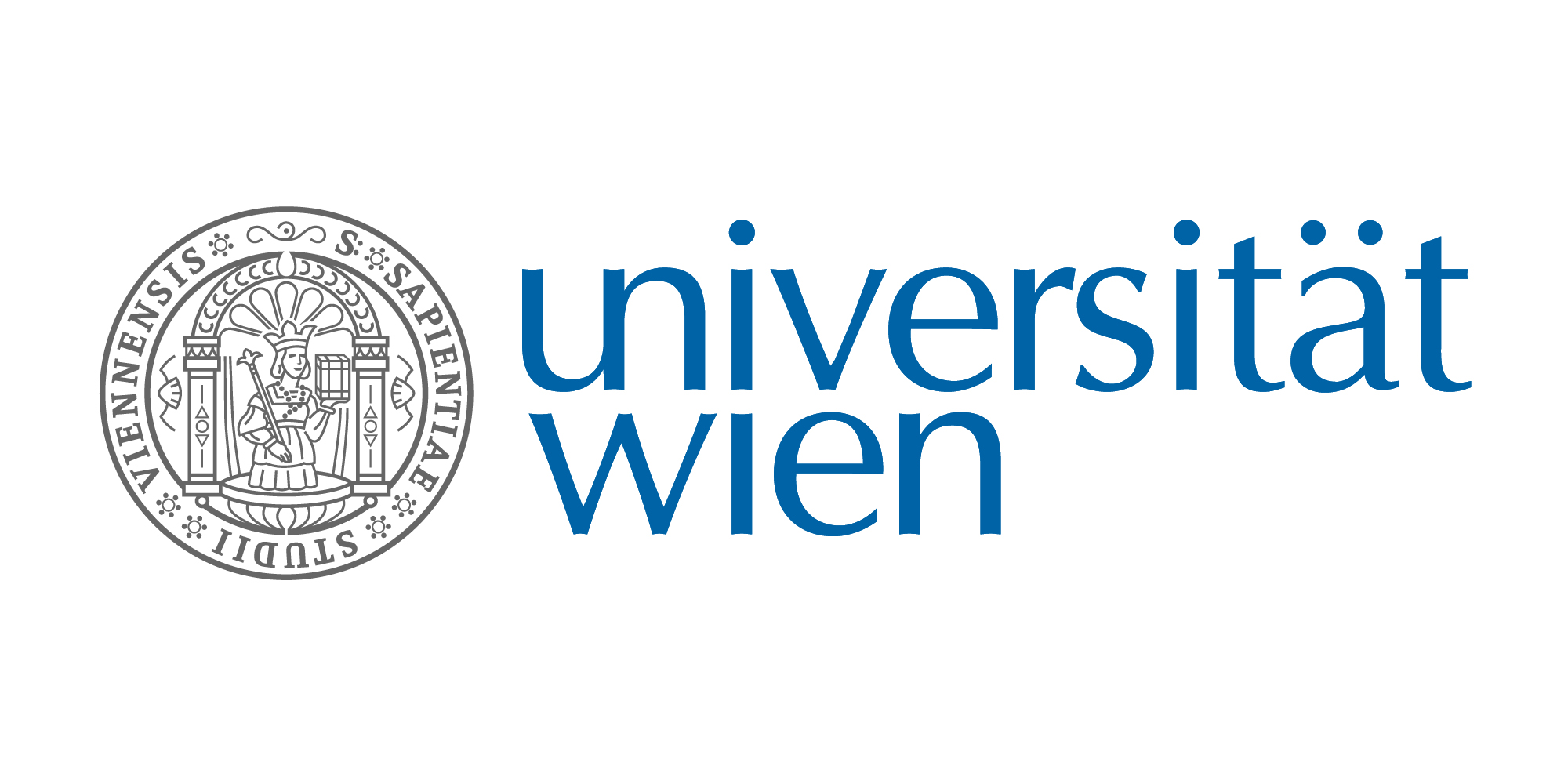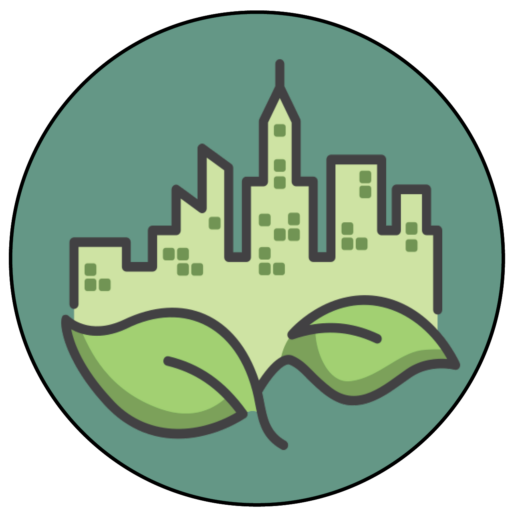Living in Vienna: Socio-spatial urban diversity experienced by 4CITIES students
Author: Yawar Mohd
Students of the 4CITIES Erasmus Mundus Masters Programme in Urban Studies delivered Pecha-Kucha-style presentations to urban planning master students at TU Berlin. The challenge? Each presentation consisted only of 20 slides delivered in under 7 minutes, combining visuals and text to explore critical urban issues. This event marked the end of the semester within the course “Socio-spatial urban diversity” led by Yvonne Franz during summer term 2024.
Key Takeaways
- Equity and Responsibility: Urban planners must consider both social and physical infrastructures to promote spatial justice and equity. The presentations highlighted the importance of addressing the needs of various community groups, ensuring that public spaces and infrastructures serve everyone.
- Care for Marginalized Groups: Cities must care for marginalized groups, ensuring diverse and inclusive urban environments. The discussions emphasized the need for urban designs that are sensitive to gender, age, and socioeconomic differences, and the role of public policies in supporting these designs.
- Housing Access: Migrants face significant challenges in accessing housing, requiring both top-down and bottom-up approaches to ensure fairness. The presentations showcased Vienna’s efforts in providing social housing but also pointed out areas where improvements are needed, such as addressing the hidden homelessness problem.
- Public Space and Identity: Understanding and accommodating diverse identities in public spaces is crucial for fostering inclusive cities. The art-based methodologies used in the presentations provided innovative ways to capture and reflect on these identities.
- Diverse Public Spaces: Public spaces vary widely in function and form, reflecting historical and contemporary urban dynamics. The case studies from Vienna demonstrated how historical sites can be repurposed to serve modern needs while preserving their cultural significance.
- Environmental Integration: Green and blue spaces are essential for enhancing urban livability and promoting environmental health. The importance of integrating nature into urban planning was highlighted through examples of parks, rivers, and green streets in Vienna.
Topic 1: From Social to Physical Infrastructure: Spatial Justice and Equity
- Presenters: Hillary Yu Zin, Zhou Yang, Yannic Walther, Nic Belluk, Yuncen (Amalia) Huang, Rozi Sós, Michelangelo Ricci
- Content: This presentation highlighted the risks and responsibilities associated with maintaining cultural infrastructure in Vienna. Examples included subcultural venues and the impact of development projects on these spaces. The students emphasised how urban planners and city governments can mitigate these risks through careful planning and supportive measures, such as funding noise reduction systems for venues at risk from nearby residential developments.
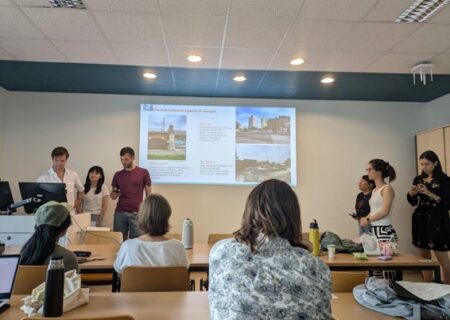
Topic 2: Responsibility of the City to Provide Care for Marginalized Groups
- Presenters: Maddie Mesich, Emory Lietz, Shellyn Fortuna, Elien Stouten, Imad Haydar, Mohd Yawar
- Content: This presentation examined how urban planning can support marginalised populations, focusing on social diversity, and the inclusion of women, students and migrant populations. The case studies from Vienna included gender-sensitive design elements in public spaces and urban planning, social housing for migrant populations, and the role of universities in providing care infrastructure for students. They highlighted issues such as gentrification and homelessness, using specific examples like the Anarchia Squat, where activists defended renters from displacement. The presentation called attention to the gaps in the system, such as the uncounted homeless who do not stay in official shelters.
Topic 3: Local Housing Market Access for Migrants
- Presenters: Benoit Buch-Dury, Alyssa Key, Yevheniia Kotiakhova, Ahmed Manaal, Timi Koyejo, Julieta Lechini, Lea Schade, José Bucio, Julia Brito, Marie Palmers
- Content: This group shared their housing experiences and living arrangements in Vienna through a short documentary film. The film provided a personal and in-depth look into the diverse living situations faced by the students. It showcased their daily lives, highlighting the practical challenges and unique aspects of living in shared accommodations, student housing, and private apartments. Through interviews and candid footage, the documentary captured the emotional and social dynamics of their living environments.
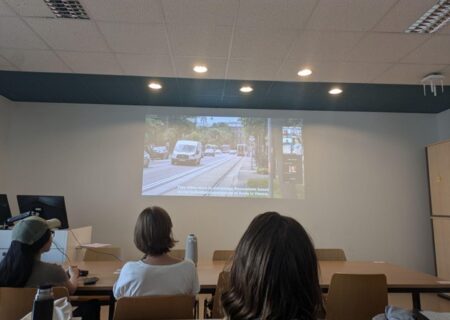
Topic 4: Understanding Lived Experiences & Performance of Identity in Public Space
- Presenters: Ali Samoo, Carlotta Robson, Paz Cárdenas Briones, Dani Viana Santos, Adi Raczykowski, Margareta Reljić, Agata Guńková
- Content: The focus was on how diverse identities are performed and experienced in public spaces. The students used art-based methodologies and personal reflections to analyze public transport, political expressions, and inclusivity in urban environments. They discussed the challenges faced by marginalized groups in these spaces and the importance of designing public areas that accommodate a wide range of identities and experiences.
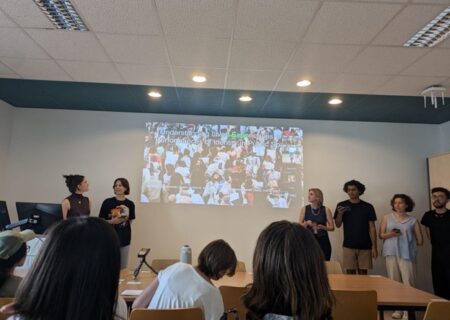
Topic 5: Typologies of Public Space
- Presenters: Quentin Galliot, Valeriya Sidorenko, Shiori Hagiwara, Rachel Luo, Luis Ullmann, William Briscoe, Nikita Tripathi
- Content: This presentation examined various types of public spaces in Vienna, discussing historical transformations, city branding, and the interplay between public and semi-public areas. They highlighted the evolution of spaces like the Museum Quarter and the Gasometer, illustrating how urban development projects can both preserve and transform historical sites. The presentation emphasized the need for a balanced approach that respects heritage while adapting to contemporary needs.
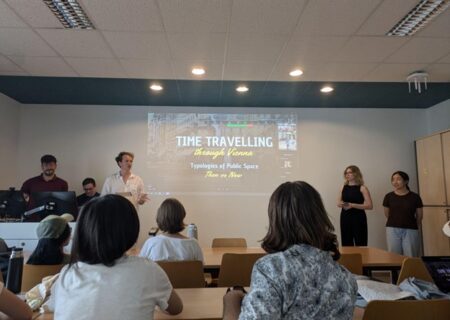
Topic 6: Journey through the Roles of Green and Blue-scapes in the Everyday Life of Viennese Residents
- Presenters: Chiara Tarulli, Izzy Verdery, Michele Castrezzati, Pengxue Chi
- Content: The importance of green and blue spaces in urban life was emphasized. The presentation included case studies on local parks, rivers, and green streets, illustrating their role in social inclusion and environmental sustainability. Examples like the Prater and the Danube Canal were used to demonstrate how these spaces serve as vital components of the urban fabric, promoting physical and mental well-being.
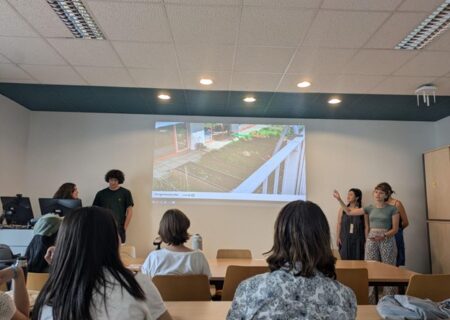
Discussion and Reflections
During the interactive session, the students from TU Berlin engaged with the 4CITIES students, raising questions about the implications of their research and the practical applications of their findings. Topics discussed included:
- Effectiveness of Public Space Design: How well do current designs promote social interaction? Students shared observations from both Vienna and Berlin, discussing how different spaces cater to various user groups and activities.
- Challenges of Providing Care: The complexity of providing adequate care for diverse populations was a major point of discussion. Participants debated the role of public policies versus grassroots initiatives in supporting marginalized communities.
- Role of Policy in Shaping Equitable Urban Environments: There was a lively discussion on the role of policy in creating fair housing systems. Students compared the lottery systems used in Vienna and the US, debating their fairness and potential for improvement.
- Local Contexts and Cross-Cultural Insights: The discussion highlighted the importance of considering local contexts when applying these insights to different cities. For instance, the challenges faced by migrants in Vienna’s housing market were compared to those in Berlin, revealing similarities and differences that could inform future urban planning efforts.
The session concluded with an invitation for further interactions and collaborations between the students of TU Berlin and 4CITIES, emphasizing the value of shared knowledge and experiences in addressing common urban challenges.
Text and pictures: Yawar Mohd, 2024.

